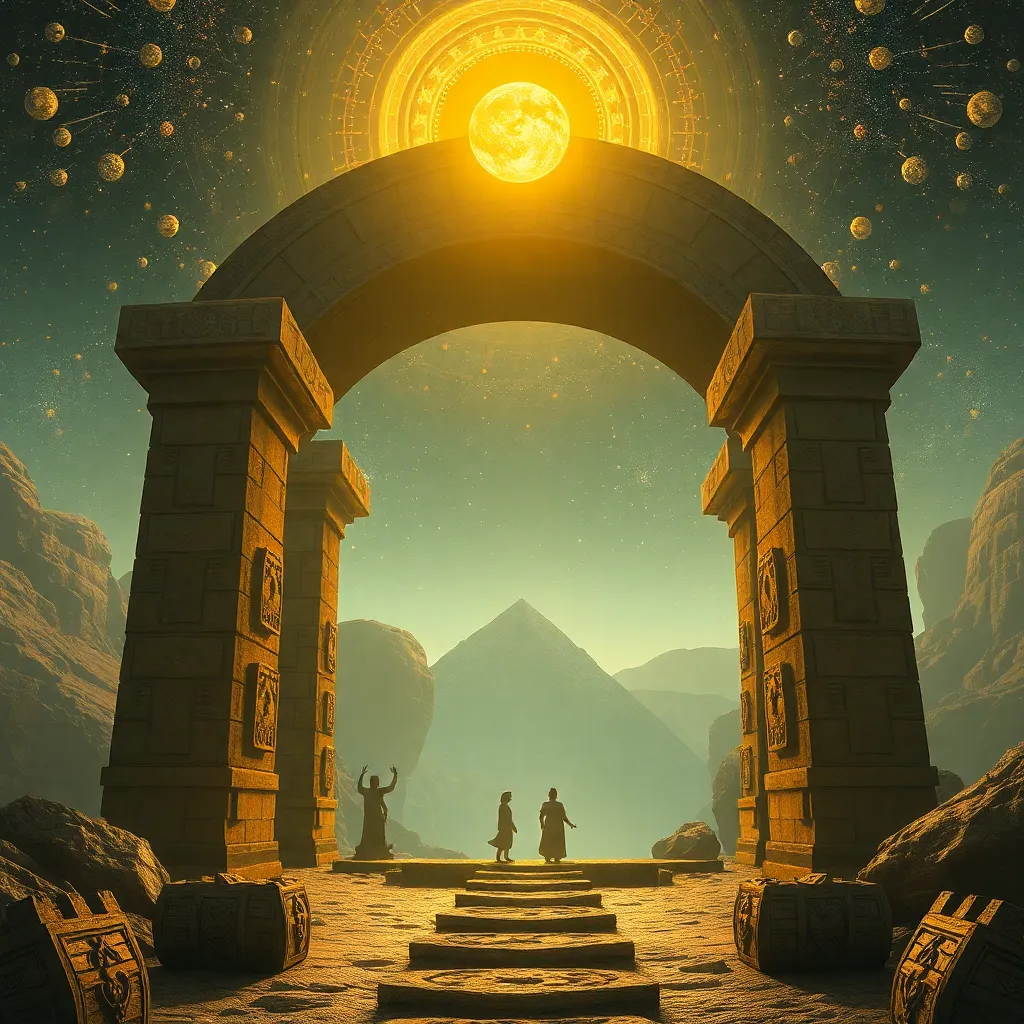The Myth of the Celestial Music: Harmony of the Spheres
I. Introduction
The Harmony of the Spheres is a fascinating concept that intertwines music, mathematics, and cosmology. It posits that the movements of celestial bodies create a form of music, an ethereal soundscape that resonates throughout the universe. This article aims to explore the origins, implications, and cultural significance of this myth, revealing its profound impact on art, science, and philosophy.
II. Origins of the Concept
The idea of the Harmony of the Spheres can be traced back to ancient Greek philosophy, particularly through the teachings of Pythagoreanism. Pythagoras, a mathematician and philosopher, was among the first to propose that numbers and ratios governed the universe. His belief in the mathematical structure of reality laid the groundwork for the concept of celestial harmony.
Key figures in this development include:
- Pythagoras: Advocated the idea that the universe is organized according to mathematical relationships, which can be expressed through musical intervals.
- Plato: Furthered the discussion by suggesting that the cosmos is a living being with a soul, which produces harmonious sounds as it moves.
This integration of music and mathematics was a hallmark of ancient thought, influencing not only philosophy but also science and the arts for centuries to come.
III. The Celestial Music Explained
The celestial spheres refer to the concentric spheres that ancient thinkers believed encompassed the Earth, with each sphere corresponding to a planet and producing its own unique sound as it moved. According to this concept, the distances between planets and their speeds would create harmonious ratios, akin to musical intervals.
This idea suggests that:
- Planets and stars are not silent; rather, they produce a continuous symphony as they traverse their orbits.
- These celestial sounds, while inaudible to the human ear, reflect an underlying order and beauty in the cosmos.
The theoretical implications of celestial harmonies extend beyond mere sound; they speak to the interconnectedness of the universe and the principles that govern it.
IV. Influence on Art and Music
The Harmony of the Spheres has had a profound impact on art and music throughout history. During the Renaissance, artists and musicians sought to embody this concept in their works:
- Art: Paintings and sculptures often depicted celestial themes, reflecting the beauty and order of the universe.
- Music: Composers like Johann Sebastian Bach and Gustav Holst drew inspiration from the idea of celestial harmony, creating pieces that evoke the grandeur of the cosmos.
In modern times, the concept continues to inspire artists and musicians, leading to innovative interpretations of the celestial soundscape.
V. Scientific Perspective
From a scientific standpoint, the relationship between astronomy and music theory is an intriguing area of study. The exploration of sound waves, frequencies, and vibrations has led to a deeper understanding of how celestial bodies interact:
- Modern physics has reinterpreted celestial sounds through the lens of gravitational waves and electromagnetic radiation, offering new insights into the dynamics of the universe.
- However, critiques of the Harmony of the Spheres concept argue that the myth oversimplifies complex astronomical phenomena and lacks empirical support.
Despite these critiques, the allure of celestial music remains a topic of fascination for both scientists and philosophers alike.
VI. Philosophical Implications
The connection between music, order, and the universe raises profound philosophical questions. The Harmony of the Spheres serves as a metaphor for the search for understanding amidst chaos:
- The idea suggests that the universe is not random but structured, with harmony reflecting a deeper truth about existence.
- It invites contemplation on how human beings perceive and interpret the cosmos through the lens of art and music.
This reflection on harmony encourages individuals to seek meaning and beauty in their lives, mirroring the order they observe in the universe.
VII. Cultural Impact and Legacy
The concept of the Harmony of the Spheres has persisted throughout history, influencing contemporary culture in various ways:
- In literature, authors often reference the idea to evoke themes of cosmic order and beauty.
- Popular media, including films and documentaries, explore the intersection of music, science, and philosophy, keeping the myth alive in modern discourse.
Ongoing discussions in philosophy and spirituality continue to reflect on the implications of celestial harmony, emphasizing its relevance in understanding our place in the universe.
VIII. Conclusion
In summary, the Harmony of the Spheres encapsulates a rich tapestry of ideas that bridge science, art, and philosophy. Its origins in ancient thought, its influence on artistic expression, and its philosophical implications create a multifaceted perspective on the universe.
The enduring allure of the Harmony of the Spheres myth speaks to humanity’s quest for understanding and the desire to find beauty in the cosmos. As we continue to explore the intersection of these domains, we are reminded of the profound connections that exist between our existence and the celestial music that surrounds us.




